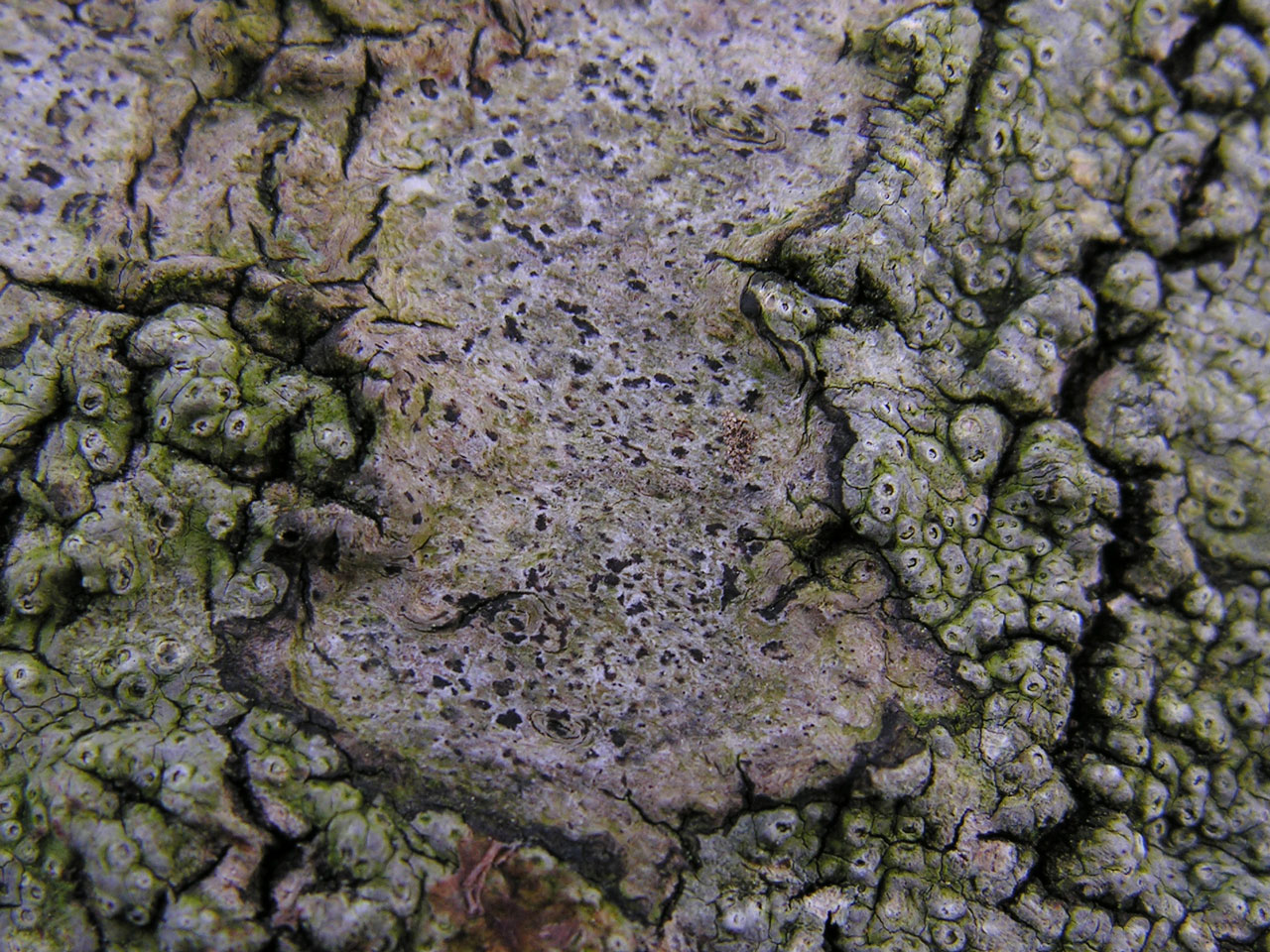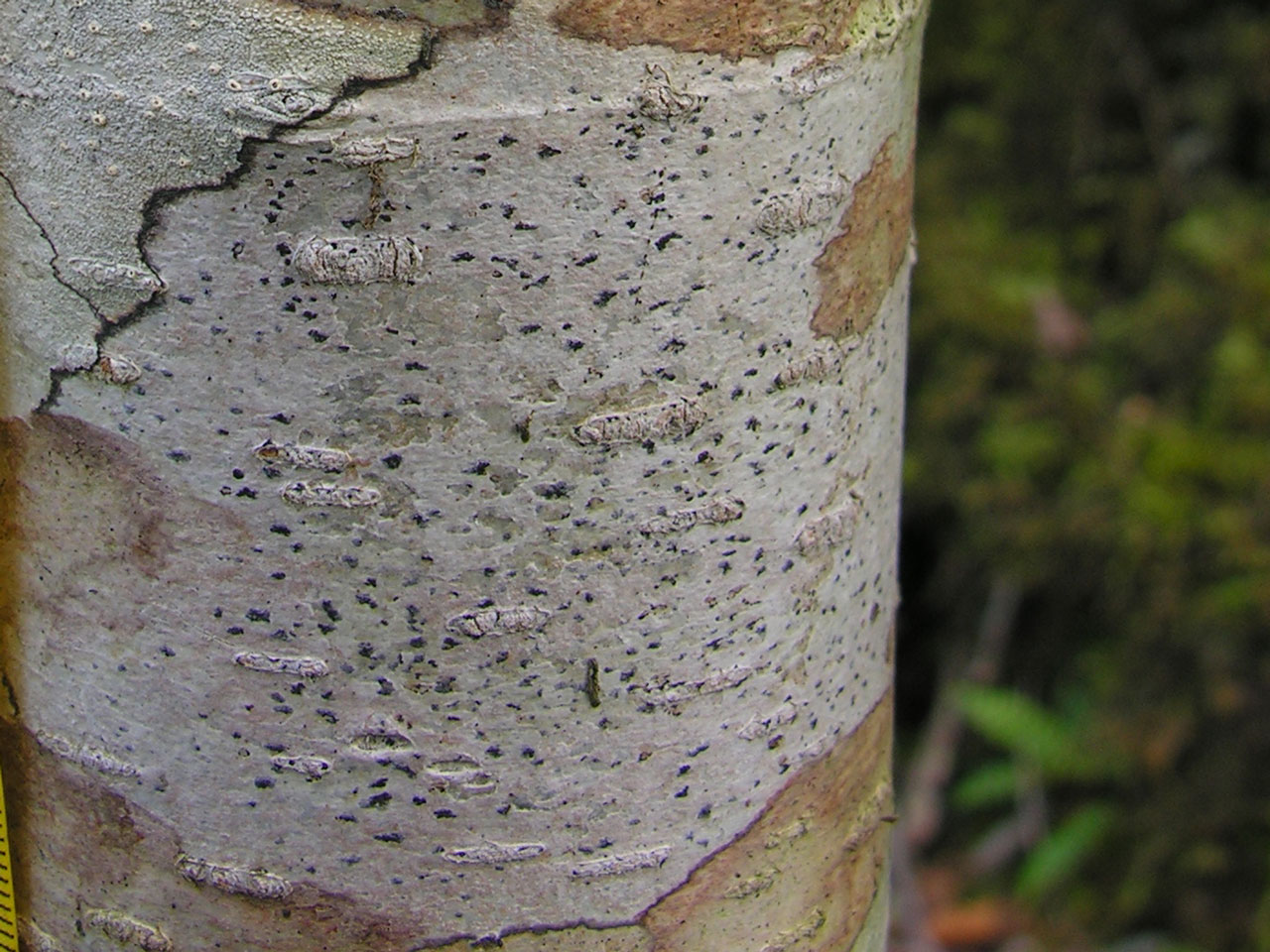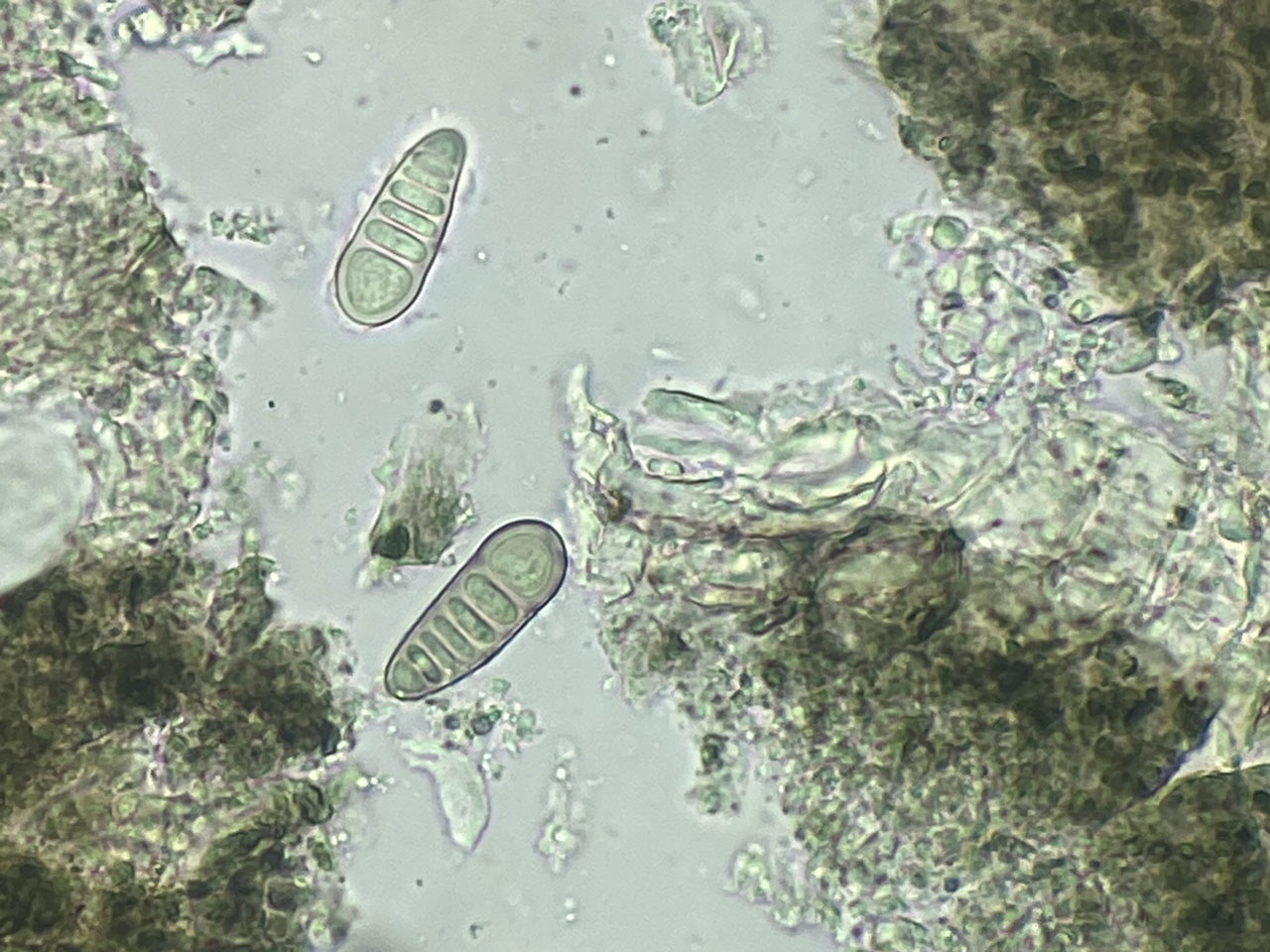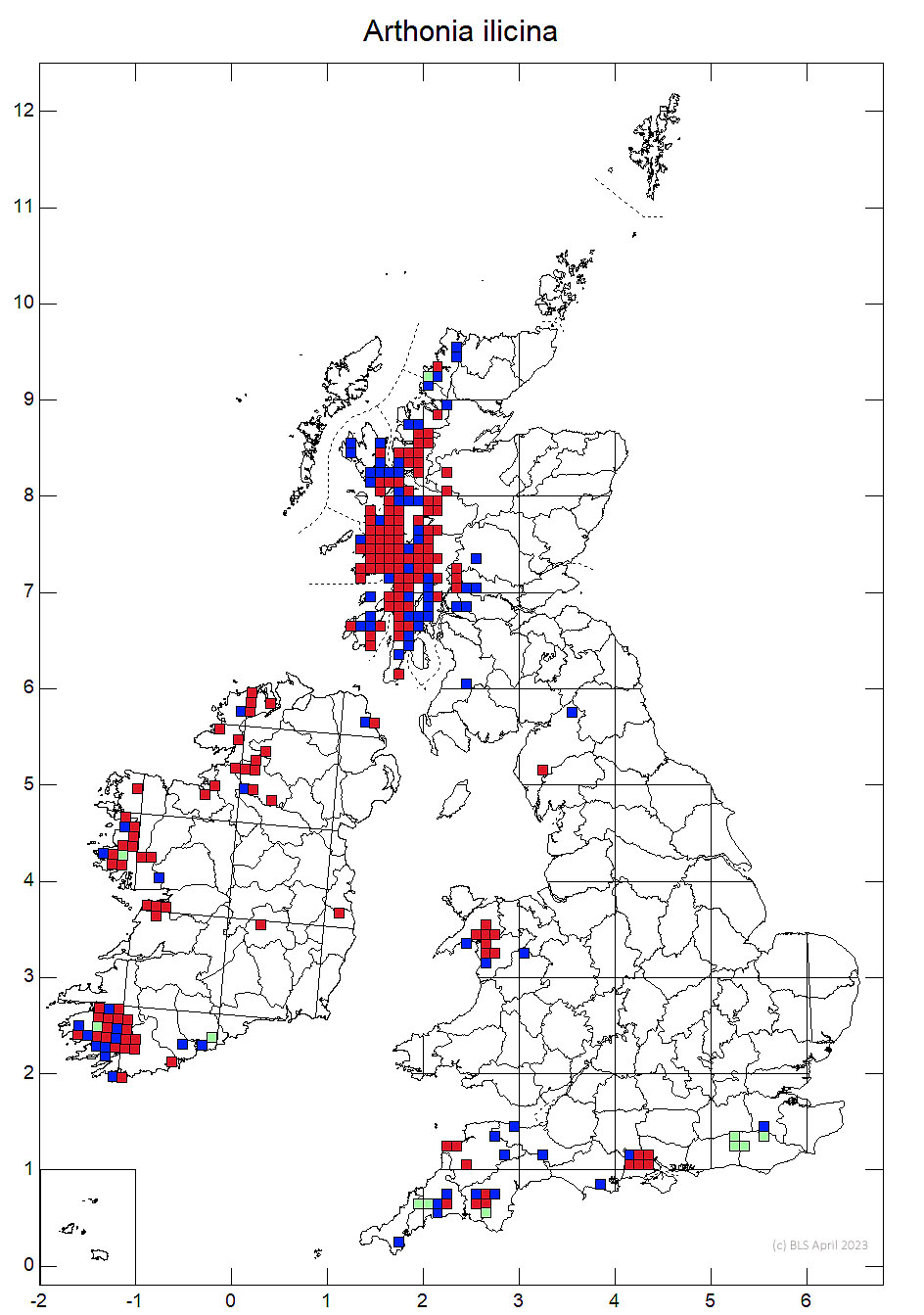A distinctive crust with dark red-brown to black and irregularly rounded apothecia on white to cream-yellow thallus found on smooth bark of old or slow growing deciduous trees and bushes in old oceanic woodlands. Distinguished from rarer lookalikes by the long (<26µm long) non muriform spores.
Thallus immersed, effuse or delimited by a brown line, white to cream-yellow. Apothecia irregularly rounded and 0.2–1 mm diam., or a few elongated to ca 2 × 0.2–0.6 mm, flat to slightly convex, dark red-brown to black, not pruinose, in section 95–105 µm tall; epithecium red-brown, K+ pale green; hymenium 60–85 µm tall, colourless or pale red-brown, K+ pale green; hypothecium 20–30 µm tall, concolorous with the hymenium or darker in places; paraphysoids numerous, ca 1 µm diam., brown-walled and 1.5–2 µm diam. in the epithecium. Ascospores 26–36 × 10–13 µm, obovoid-cylindrical, often slightly curved, (4-) 5-6 (-7)-septate, the apical cells enlarged, old spores brown, smooth or very faintly warted (×1000 lens). Pycnidia rare, 60–80 µm diam., brown, the wall red-brown, K+ pale green; conidia 7–9 × ca 1 µm, bacilliform. No lichen products detected by TLC.
Arthonia ilicinella has smaller ascospores and generally smaller apothecia; Arthothelium dictyosporum and A. macounii are superficially similar, as occasuonally can be Arthothelium ruanum when it has a pale thallus, but all have muriform ascospores.
Frisch et al. (2014) found that an American collection identified as this species clustered within the cryptothecioid clade of the Arthoniaceae close to Briancoppinsia and Tylophoron, but it is retained here pending molecular studies of European material.
On smooth, more rarely rough, bark of old or slow growing deciduous trees and bushes in old oceanic woodlands. Once observed apparently bing parasitised by Arthonia ilicinella.

Locally common in western Scotland, scarce beyond in S. & W. Britain, W. Ireland.
This has very strong populations in the temperate rainforests of the western Highlands and Isles of Scotland. In England and Wales, however, most populations are very small, with often on a few trees at each site and only the New Forest, Hampshire has a substantial population. Not threatened nationally but potentially threatened in England and Wales. Historically reduced by intensive coppicing in the south, but any recovery is threatened increasing shade within woodlands due to the loss of traditional extensive grazing from woodlands.
Britain: Notable & International Importance species
Scotland: Priority Taxon for Biodiversity in Scotland
Cannon, P., Ertz, D., Frisch, A., Aptroot, A., Chambers, S., Coppins, B. J., Sanderson, N. A., Simkin, J. & Wolseley, P. (2020) Arthoniales: Arthoniaceae, including the genera Arthonia, Arthothelium, Briancoppinsia,Bryostigma, Coniocarpon, Diarthonis, Inoderma, Naevia, Pachnolepia, Reichlingia, Snippocia, Sporodophoron, Synarthonia and Tylophoron. Revisions of British and Irish Lichens 1: 1 - 48
Frisch, A., Thor, G., Ertz, D. & Grube, M. (2014). The Arthonialean challenge: restructuring Arthoniaceae. Taxon 63: 727–744.
Text by Neil A Sanderson, based on Cannon et al (2020)



